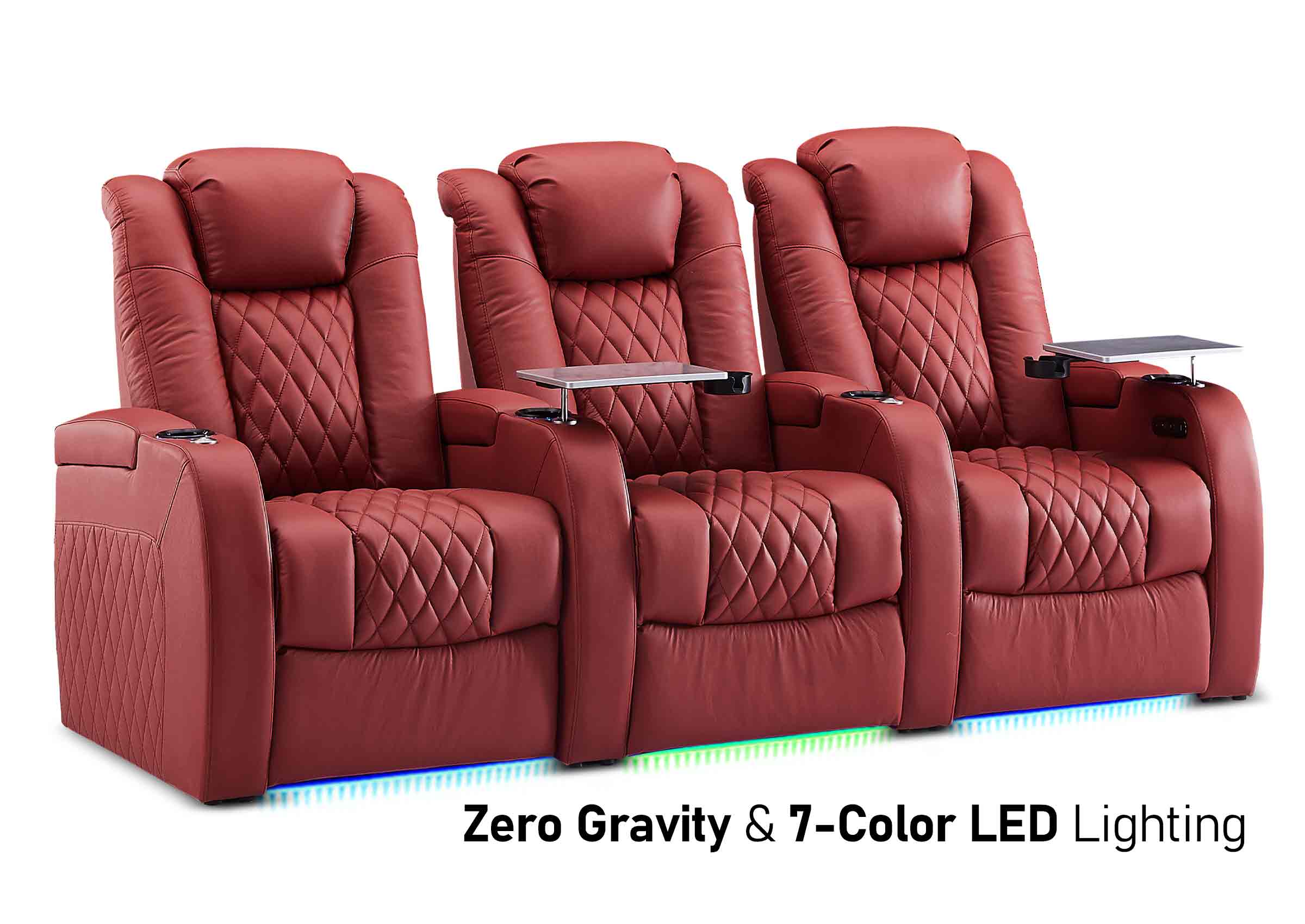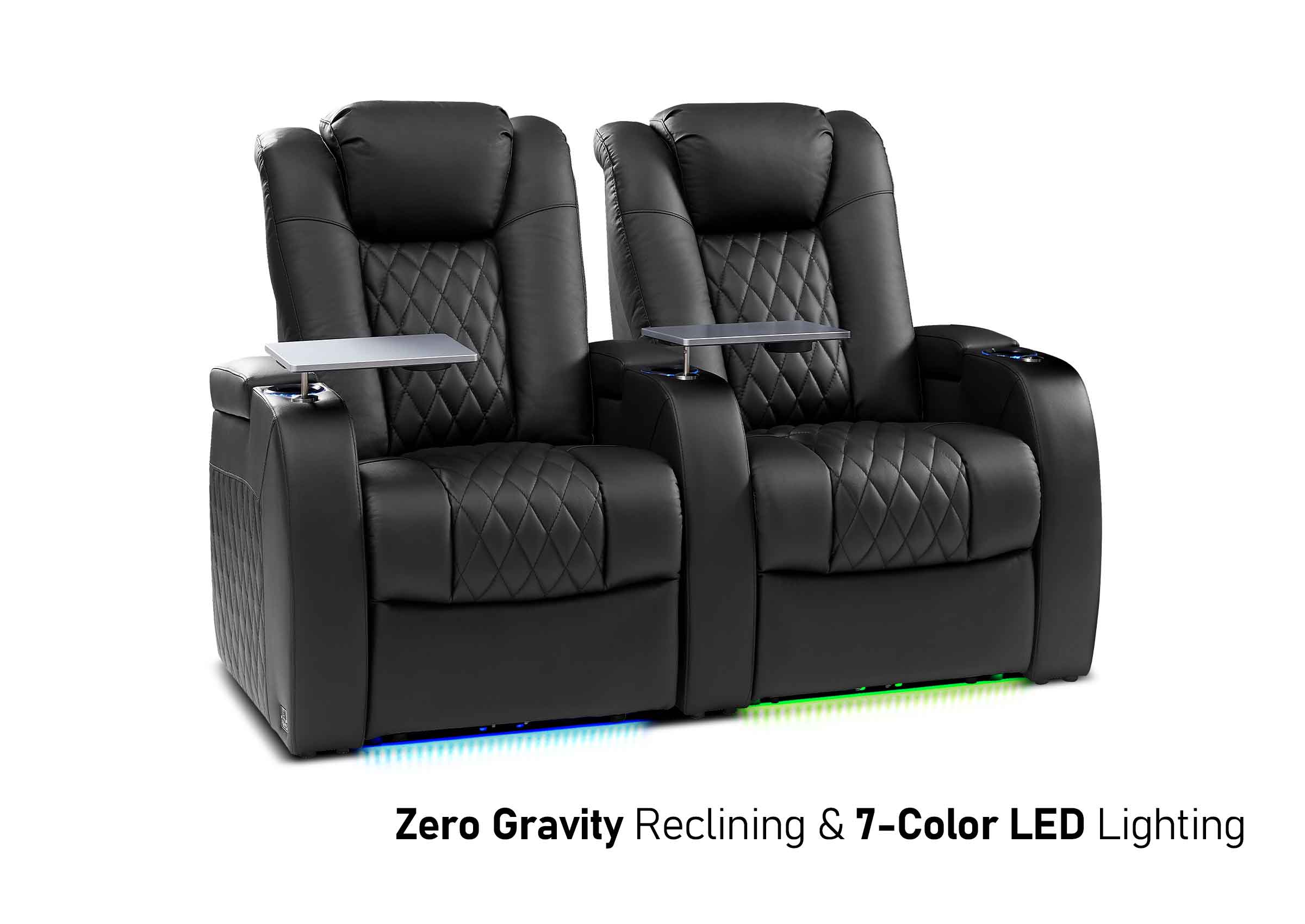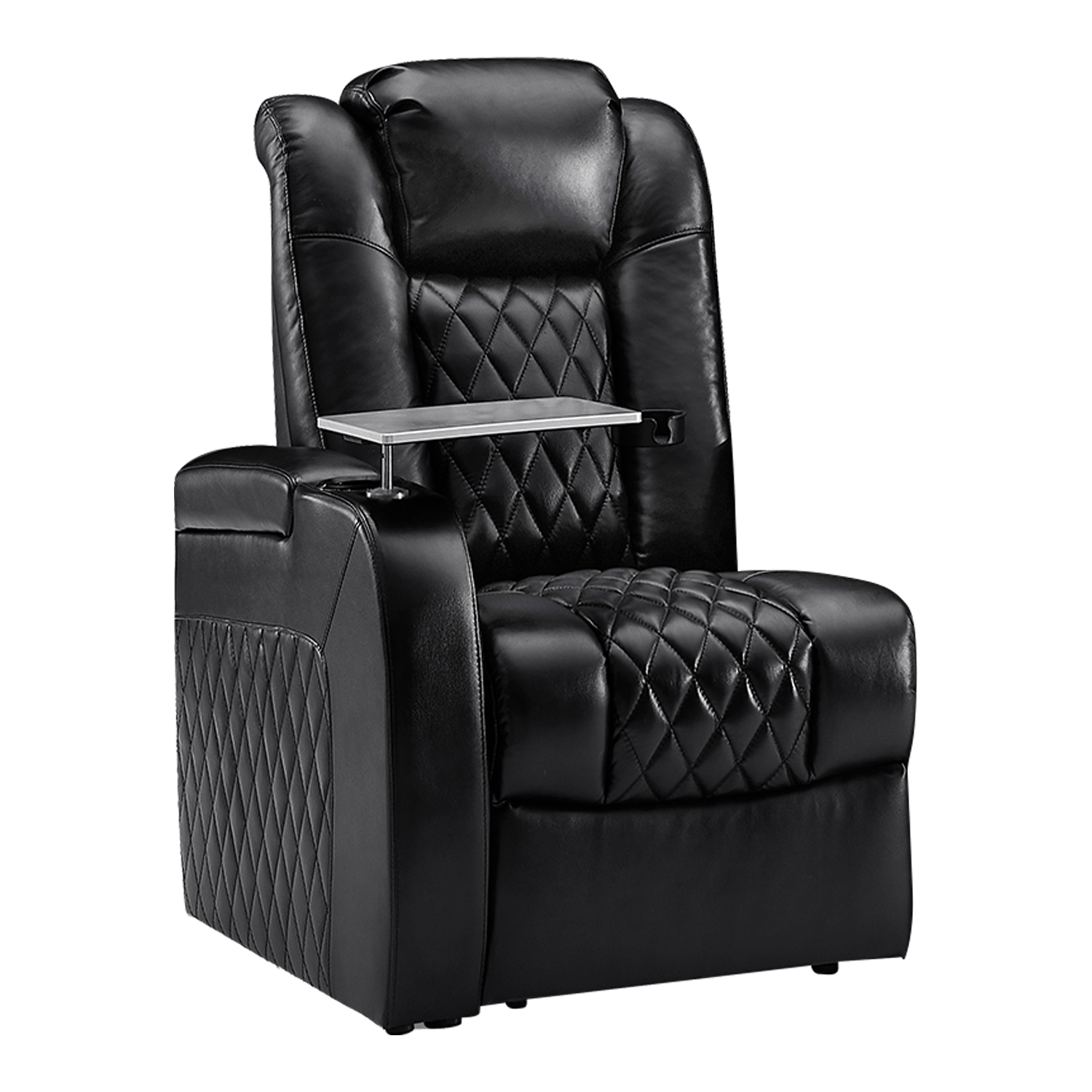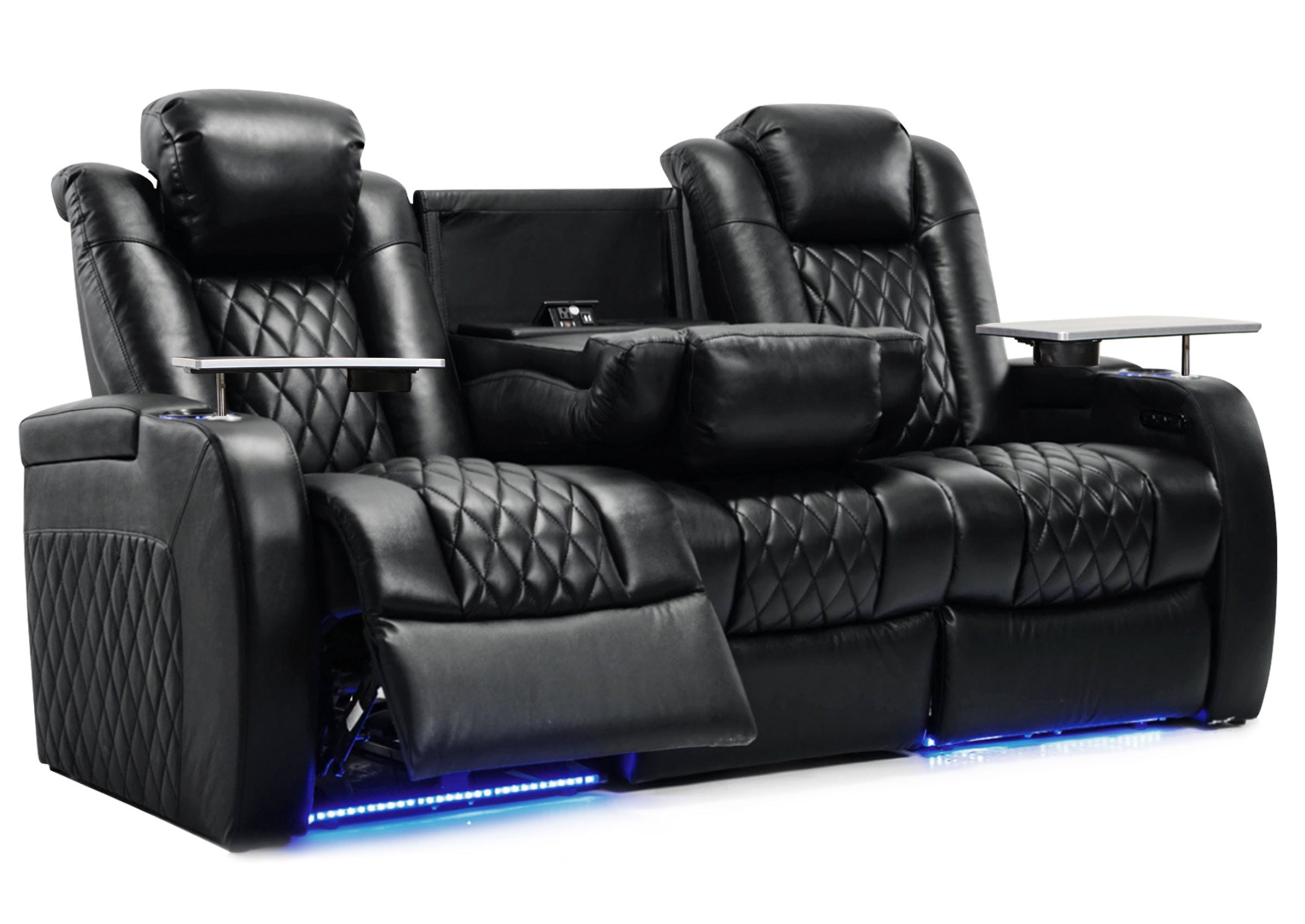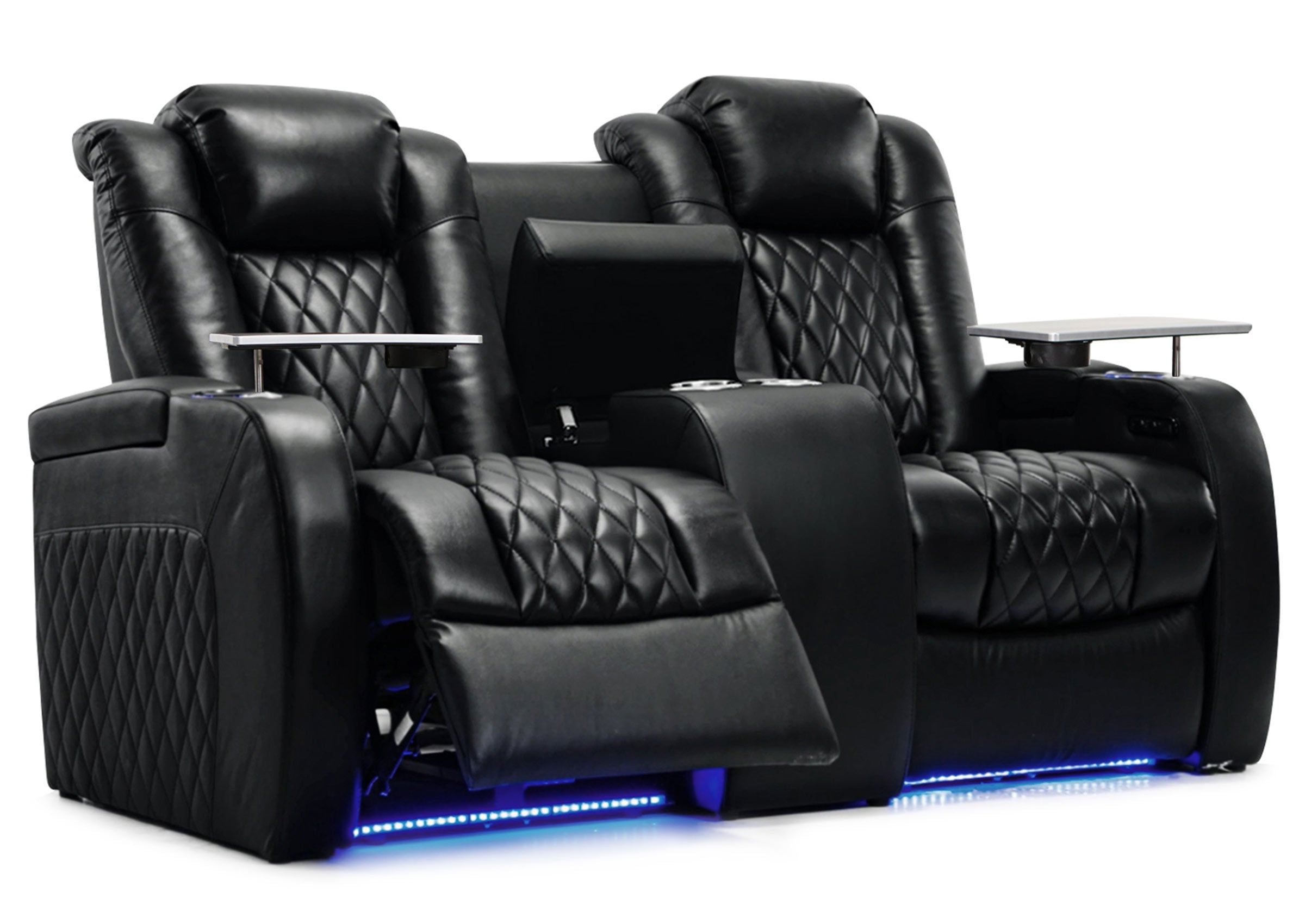|
Color |
Key Benefits |
Ideal For |
Visual Impact |
|
Black |
Minimizes screen glare, hides stains and wear, enhances immersive experience |
Frequent use, various tech integration |
Modern, sleek, versatile |
|
Blue |
Reduces light reflection, calming effect, enhances visual experience |
Balance between functionality and style |
Deep, sophisticated, tranquil |
|
Brown |
Hides wear and spills, enhances natural elements, requires less maintenance |
Family-oriented spaces, natural decor |
Warm, inviting, adaptable |
|
Red |
Raises energy levels, dramatic and luxurious, captures attention |
Action films and dynamic viewing experiences |
Bold, stimulating, dynamic |
|
Grey |
Supports on-screen colors, versatile in decor adaptation, maintains appearance under different light |
Frequent updates, versatile design settings |
Understated elegance, enhances color vibrancy |
In 2025, the trends in home theater design lean towards creating a space that not only mimics the thrill of the cinema but also adds a personal touch that resonates with the homeowner's style. This article explores five top color choices for home theater seating that are set to dominate the design in 2025, each offering its own unique appeal.
1. Black Home Theater Seating
Black seats are especially effective in home theaters due to their light-absorbing qualities. This characteristic is crucial because it minimizes screen glare and reflections during viewing, ensuring that nothing distracts from the clarity and brightness of the projected images. Furthermore, black fabric or leather does an excellent job of hiding stains and signs of wear. This durability makes black an ideal choice for those who anticipate frequent use of their home theater, whether for daily family gatherings or regular social events.
The aesthetic appeal of black seating complements a wide range of technology, from speakers to projectors, most of which typically come in various shades of black or dark gray. This harmony creates a unified look in your home theater, enhancing the immersive experience by keeping the focus on the screen without the distraction of clashing colors. In terms of design flexibility, black is a universal match for any decorating style, providing a sleek, modern look that can either stand out or blend in, depending on the surrounding décor. This versatility is why black remains a popular choice among home theater enthusiasts seeking a combination of style, function, and longevity in their seating arrangements.

2. Blue Home Theater Seating
Blue, particularly in its deeper hues such as navy, can significantly influence the mood and ambiance of your home theater. Navy blue, with its rich, deep tones, not only brings an aesthetic of depth and sophistication but also enhances the visual experience. It reduces light reflection in a manner similar to black, yet offers a warmer, more inviting atmosphere. This color works particularly well in rooms where you aim to achieve a balance between functionality and style, providing a less stark contrast than black.
Blue's psychological benefits are well-documented; it is often associated with tranquility and mental clarity. In a home theater setting, these attributes can transform your viewing area into a serene haven, ideal for unwinding after a busy day. The color blue can lower heart rates and reduce anxiety, preparing viewers for a relaxed and enjoyable film experience.
Furthermore, blue is versatile in terms of interior design. It matches well with various themes beyond the typical minimalist or nautical approaches. For instance, pairing dark blue seating with metallic or wooden accents can create an elegant, contemporary look. Additionally, when the room's lighting is dimmed and the screen lights up, blue seating absorbs and reflects the light, enhancing the overall sensory experience by subtly echoing the colors and tones appearing on the screen. This immersive quality makes blue a superb choice for those looking to create a distinctive yet functional home theater environment.

3. Brown Home Theater Seating
Brown is inherently a rich, earthy color that can create a variety of moods in a home theater, from a casual, cozy vibe to a more refined and elegant atmosphere. Shades like chocolate and espresso exude warmth, inviting viewers to relax and enjoy their viewing experience in utmost comfort. This color works exceptionally well in rooms that feature natural materials such as wood flooring, beams, or paneled walls, as it enhances the organic elements of the space.
In terms of functionality, brown seating is very practical for a family-oriented home theater. It hides wear and minor spills well, making it ideal for a setting that might host frequent family movie nights, gatherings during sports events, or children's playdates. Furthermore, darker brown tones don't show dirt as easily, reducing the need for frequent cleaning and maintenance.
The aesthetic versatility of brown allows it to adapt seamlessly to various decorating styles. Whether you're aiming for a rustic look with rugged leather seats and classic wood combinations, or a more sophisticated tone with smooth, dark espresso finishes, brown can accommodate these themes effortlessly. It also pairs beautifully with a wide range of colors, allowing for flexibility in changing decor accents such as throws, cushions, and curtains without clashing with the main color scheme. This makes brown a superbly adaptive choice for those who enjoy updating their interiors without undertaking complete overhauls.

4. Red Home Theater Seating
Red home theater seating, when selected thoughtfully, can transform an ordinary room into a vibrant and energizing space reminiscent of the grandeur found in old-world theaters. Opting for deeper shades like burgundy or maroon infuses the area with drama and sophistication without overwhelming the senses. This color is strongly associated with luxury and dynamism, enhancing the ritualistic feel of movie watching.
The psychological impact of red is notable; it raises energy levels, making it perfect for genres that keep viewers engaged, such as thrillers and action films. Red home theater seating captures attention and enhances emotional intensity, which is ideal for creating an immersive viewing experience.
Red excels at evoking a traditional cinema atmosphere and is well-suited for retro or themed designs, like Hollywood styles or theater-style layouts. It serves as a striking focal point against subdued backgrounds like grey, black, or white, adding depth and cohesion to the room’s design. For those seeking a memorable and stimulating movie-watching environment, red home theater seating is a bold yet rewarding choice.
Ideal Scenarios:
- Pair with dark-colored walls (such as deep grey or black) and warm ambient lighting to create a layered aesthetic.
- Avoid large expanses of pure red, which can lead to visual strain. Balance the intensity with leather textures or mixed designs, like red paired with black, to maintain visual harmony and reduce any overpowering effects.
Red home theater seating is versatile, complementing both contemporary and classic interiors, and allows for various accessory and decor options that can evolve with changing tastes and trends.

5. Grey Home Theater Seating
Grey, with its spectrum ranging from light heather to deep charcoal, is increasingly favored in home theater designs for its modern, understated elegance. This color offers a neutral palette that works seamlessly within various design schemes, providing a solid foundation that allows other elements of the room to stand out. Grey is particularly effective in home theaters because it supports the visual experience by enhancing on-screen colors, making them appear more vibrant and distinct.
The versatility of grey is one of its strongest attributes. It can be paired with bold hues in accessories, like bright throw pillows or vibrant posters, allowing these accent pieces to pop against its muted background. This flexibility is invaluable for those who enjoy updating their decor frequently or seasonally without the need for a complete overhaul.
Moreover, grey has a unique capacity to adapt to different lighting conditions, maintaining its integrity whether in the bright ambiance of a family movie afternoon or the dim glow of a late-night film session. It also does not show dirt or wear easily, which is an essential consideration for a space used regularly for entertainment.
In terms of texture, grey seats can range from plush velvets to sleek leathers, each adding a different layer of depth and interest to the room's aesthetics while keeping the focus on the cinematic experience. Grey's ability to blend function and style makes it a smart choice for anyone looking to create a sophisticated, yet practical home theater environment.

Final Words
When choosing the right color for your home theater seating, you may consider both aesthetic appeal and practical functionality. Black offers unmatched versatility and low maintenance, while blue and brown invite calmness and warmth, respectively. Red can energize and excite, making it ideal for a more traditional theater feel, whereas grey provides a contemporary edge that supports various design elements. Anyway, the best choice will harmonize with your personal style and enhance your overall home theater experience.








